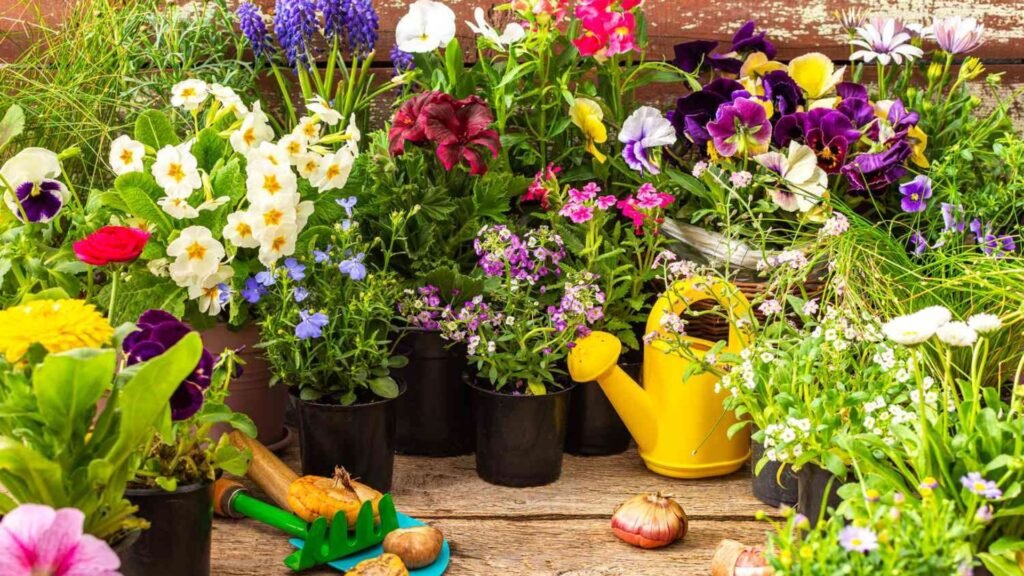Best Annual Flowers for Adding Color to Your Garden
Annual flowers are a fantastic way to add vibrant colors and dynamic beauty to your garden. Unlike perennials, annuals complete their life cycle in one growing season, which means they offer a wide variety of colors and shapes that can instantly transform your garden space. Here’s a guide to some of the best annual flowers that can provide continuous blooms and vivid colors throughout the growing season.

Benefits of Annual Flowers
1. Continuous Blooms:
- Long Flowering Period: Annuals typically bloom from spring until the first frost, providing extended periods of color.
- Variety: They come in a wide range of colors, sizes, and shapes, allowing for diverse planting options.
2. Flexibility:
- Seasonal Changes: Annuals can be replaced each year with new varieties or colors, making it easy to refresh your garden’s look.
- Design Options: They work well in garden beds, containers, and hanging baskets, offering versatile design opportunities.
3. Fast Growth:
- Quick Results: Annuals grow quickly and often reach full bloom in a shorter time frame compared to perennials.
- Immediate Impact: They provide instant color and texture, ideal for creating immediate visual interest in your garden.
Top Annual Flowers for Adding Color
1. Petunias (Petunia spp.)
- Appearance: Available in a wide range of colors, including pink, purple, red, and white, with a variety of patterns.
- Benefits: Long-lasting blooms; ideal for containers, hanging baskets, and garden beds.
- Growing Conditions: Prefers full sun and well-drained soil. Tolerant of heat.
2. Marigolds (Tagetes spp.)
- Appearance: Bright, cheerful flowers in shades of orange, yellow, and red.
- Benefits: Drought-tolerant; helps deter pests like aphids and nematodes.
- Growing Conditions: Prefers full sun and well-drained soil. Easy to grow and maintain.
3. Zinnias (Zinnia elegans)
- Appearance: Colorful blooms in red, pink, orange, yellow, and white, with a daisy-like structure.
- Benefits: Attracts butterflies; thrives in hot, sunny conditions.
- Growing Conditions: Prefers full sun and well-drained soil. Resistant to drought.
4. Impatiens (Impatiens walleriana)
- Appearance: Available in a variety of colors, including red, pink, white, and purple, with smooth, glossy leaves.
- Benefits: Excellent for shaded areas; provides vibrant color in low-light conditions.
- Growing Conditions: Prefers partial to full shade and well-drained, consistently moist soil.
5. Begonias (Begonia spp.)
- Appearance: Available in a range of colors, including red, pink, white, and orange, with ornamental foliage.
- Benefits: Versatile; suitable for containers, hanging baskets, and garden beds.
- Growing Conditions: Prefers partial shade to full shade and well-drained soil.
6. Cosmos (Cosmos bipinnatus)
- Appearance: Delicate, daisy-like flowers in pink, red, white, and orange, with feathery foliage.
- Benefits: Attracts butterflies; thrives in hot, sunny conditions.
- Growing Conditions: Prefers full sun and well-drained soil. Tolerant of drought.
7. Snapdragons (Antirrhinum majus)
- Appearance: Tall spikes of flowers in a wide range of colors, including pink, red, yellow, and white.
- Benefits: Provides vertical interest; suitable for borders and garden beds.
- Growing Conditions: Prefers full sun to partial shade and well-drained soil.
8. Lobelia (Lobelia erinus)
- Appearance: Trailing plant with small, vibrant blue, purple, or white flowers.
- Benefits: Excellent for containers and hanging baskets; provides a cascading effect.
- Growing Conditions: Prefers full sun to partial shade and well-drained soil. Needs regular watering.
9. Sweet Alyssum (Lobularia maritima)
- Appearance: Tiny, fragrant flowers in white, pink, and purple, forming dense mats.
- Benefits: Attracts beneficial insects; great for ground cover and containers.
- Growing Conditions: Prefers full sun to partial shade and well-drained soil.
10. Sunflowers (Helianthus annuus)
- Appearance: Large, bright yellow flowers with dark centers, reaching impressive heights.
- Benefits: Attracts bees and butterflies; provides a dramatic focal point in the garden.
- Growing Conditions: Prefers full sun and well-drained soil. Requires space for growth.
Tips for Planting and Caring for Annual Flowers
1. Soil Preparation:
- Soil Quality: Ensure the soil is well-drained and enriched with compost or organic matter for optimal growth.
- pH Levels: Most annuals prefer a slightly acidic to neutral pH.
2. Planting:
- Timing: Plant annuals after the last frost in spring for best results.
- Spacing: Follow recommended spacing to avoid overcrowding and ensure healthy growth.
3. Watering and Fertilizing:
- Watering: Water regularly, especially during hot, dry periods. Ensure the soil remains moist but not waterlogged.
- Fertilizing: Use a balanced fertilizer to support flowering and overall plant health.
4. Deadheading and Pruning:
- Deadheading: Remove spent blooms regularly to encourage continuous flowering.
- Pruning: Trim back leggy growth to promote bushier plants and more blooms.
5. Pest and Disease Control:
- Monitoring: Regularly check for pests like aphids and spider mites. Treat problems early to prevent damage.
- Disease Management: Avoid overhead watering and ensure good air circulation to reduce the risk of fungal diseases.
Conclusion
Annual flowers are perfect for adding vibrant colors and visual interest to your garden. By choosing the right varieties and providing them with proper care, you can enjoy a garden full of lively blooms that enhance your outdoor space throughout the growing season.



